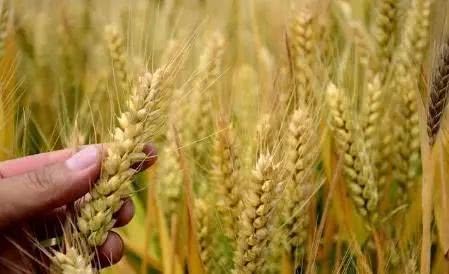If you have the skill to catch ricefield eel, don't regard the snake hole as a yellow eel hole.

When I mention the rice field eel, I remember that when I was a child, after the fish pond in front of my home was cleared, there was a little water left in the fish pond, and many children nearby should go to look for Loach in groups. If you can find the rice field eel, you will simply make a lot of money, because when you get home, the fried eel made by my mother is simply delicious. However, eels are really difficult to catch, not only hidden in mud holes, but also slippery, it is not easy to catch at all, and sometimes the rice field eels run away as soon as they are in their hands.
Although the ricefield eel is not easy to catch, it can not stop people from loving it. I am delicious, with few thorns, and the meat is fresh and tender. And Monopterus Albus also has high nutritional value, rich in protein, calcium, iron, etc., but also rich in vitamins, which is very beneficial to the human body. It also has a certain medicinal value, Monopterus Albus has the functions of tonifying qi and blood, anti-inflammation and disinfection. Of course, the market price of such a delicious ricefield eel is not cheap.
Habits of Monopterus Albus
If you want to find Monopterus Albus, you need to know the living habits and habitat characteristics of Monopterus Albus. Monopterus Albus is as adaptable as Loach and can live in silt. Monopterus Albus can be found in ponds, rice fields and small river ditches. Monopterus Albus usually lives in a place with at least two holes, one for breathing, usually about ten centimeters above the water, and the other for escape. And the size of the cave is generally three times the length of Monopterus Albus. Monopterus Albus usually hunt at night, so fishing for Monopterus Albus at night is easier to succeed.
Let's take a look at how to find the hole of Monopterus Albus.
When I was young, in addition to going back to the fish pond to catch ricefield eel, there was another place where rice eel was often found, that is, rice fields. Ricefield eel is often found in rice fields, but it is not easy to catch. When I was a child, I was most afraid of leeches in rice fields. Generally speaking, the yellow eel hole in the rice field is most easily found before and after Lesser Heat. Generally speaking, there are many white bubbles in the rice field, so there must be a yellow eel hole here!
At this time, the rice field is not very high, and it is relatively easy to see holes. Generally speaking, the two holes of Monopterus Albus are large and small, and the small one is generally on the ridge of the field. This is too small to be found. There is also a hole in the rice field, which is a little bigger and the hole is relatively smooth. Observe that the water surface will fluctuate slightly, and some will have white foam, so there must be rice field eel in it! However, most of this kind of rice field eel is laying eggs, if the rice field eel is taken away, the hatched young eel seedlings will also die.
But be careful not to mistake the snake hole for a ricefield eel hole, or you will be bitten. Snake holes are generally on the ridges of the water surface, generally dry holes, the mouth of the hole is relatively rough, while the yellow eel hole is mostly wet hole, and the mouth of the hole is smooth.
In addition, there are often ricefield eels in stone seams. Generally speaking, the older the stone seams, the easier it is to have ricefield eels, but if there is mud in the stone seams, it is not good to have ricefield eels, because ricefield eels can swim back and forth and are difficult to find.
But now the rice field eel is no longer easy to find, there are not as many rice field eels as there used to be, and there are not as many fish in many ponds as before. In addition, it is suggested that it is better to release the rice field eel that is too small.
Here is science to promote agriculture, welcome to add attention, with you to grow knowledge.
- Prev

Wheat prices are expected to rise slightly in the third and fourth quarters of this year. Surplus grain can be sold at an optional date.
Wheat prices are expected to rise in the third and fourth quarters, but not by much. It is recommended that it be sold at the end of September and the beginning of October. The reasons are as follows. An analysis of the reasons for the modest increase in wheat prices after August. Since the beginning of this year, the price of wheat has changed from.
- Next

In the corner where no one can see it, the succulent plant slowly counterattacks and becomes a beauty that no one can ignore.
Full text picture and text: _ _ clouds surge into summer coordinates: Yunnan Honghe is not there on sunny days and slapping meat on cloudy days, which was not liked or ignored all the time. In the corner that no one can see, it slowly counterattacks and becomes impossible for everyone.
Related
- Wuhan Hospital Iron Tree Blooming Result Was Instantly Frightened by the Gardener Master
- Which variety of camellia is the most fragrant and best? Which one do you like best?
- What is the small blue coat, the breeding methods and matters needing attention of the succulent plant
- Dormancy time and maintenance management of succulent plants during dormancy
- Minas succulent how to raise, Minas succulent plant pictures
- What are the varieties of winter succulent plants
- How to raise succulent plants in twelve rolls? let's take a look at some experience of breeding twelve rolls.
- Attention should be paid to water control for succulent plants during dormant period (winter and summer)
- Watering experience of twelve rolls of succulent plants
- Techniques for fertilizing succulent plants. An article will let you know how to fertilize succulent plants.

